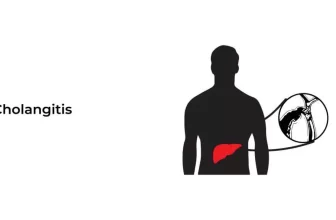Gout refers to the painful condition in which extra uric acid in a body creates swelling and tenderness in the joints, particularly the big toe. People frequently mistake it for a severe form of arthritis, in which the body’s joints enlarge due to injury or a variety of other factors. Arthritis may not always induce joint inflammation; however, gout is classified as inflammatory arthritis based on its symptoms. It is named as a gout attack when it appears in the episodes. To avoid recurrent gout episodes, the best therapies include a) eating properly, b) maintaining a healthy lifestyle, c) regular exercise routine, and d) healthy sleeping habits. As lifestyle improvement is a long-term process, therefore, doctors prescribe medication for immediate pain relief and to reduce other related symptoms.
Causes of Gout
Gout occurs when the level of waste material present in the blood named ‘uric acid’ rises, it causes the accumulation of uric acid crystals in various joints, particularly the big toe. Inflammation and severe symptoms are caused by these crystals. Uric acid levels rise for a variety of causes, one of which is eating purine-rich foods. A certain amount of uric acid in the blood is normal, but it becomes a concern when the quantity rises above average. The presence of excessive uric acid in the blood prevents the kidneys to eliminate it which will ultimately crystallize between joints and adversely damage the joints.
Due to sharp and acute pain of gout, an individual is unable to perform routine activities, particularly driving. Uric acid patients should avoid alcohol and seafood to get rid of gout episodes.
Symptoms of Gout
Gout is a joint inflammation caused by elevated uric acid levels in the blood. Gout attack symptoms include:
- Severe pain
- Inflammation
- Swelling
- Redness and discoloration
- Tenderness
- Difficulty moving
The limiting of motion caused by swelling and pain makes it difficult for an individual to perform routine activities. The gout pain can be worst on the first day of the attack and gets better over time. However, depending on uric acid levels, attacks can last a week or more.
Diagnosis
When a person exhibits the symptoms listed above, doctors diagnose gout by doing a blood test to determine the quantity of uric acid in the blood. The next step in diagnosing gout is to use X-rays and ultrasound to check for the existence of urate crystals. Another procedure, known as aspiration, can be used by the doctors to confirm the presence of uric acid built up in your joints. As bacteria or viral infections can inflame the joints and require immediate various treatments. Whenever you observe the presence of gout symptoms, you should visit the doctor immediately to get a diagnosis and treatment accordingly.
Treatment of Gout
Medication is the only approach to manage and decrease gout symptoms effectively. Doctors typically prescribe pain management medications as gout patients experience extreme pain in their toes and are unable to move them. For this NSAIDs are commonly utilized by gout patients to get relief from pain. Furthermore, anti-inflammatory medications can be administered to minimize inflammation and edoema. Doctors may give medication to treat gout by lowering uric acid levels in the blood, in addition to relieving symptoms. If gout worsens significantly and contributes to the formation of kidney stones, then the doctor will adopt some other treatment options such as laser removal of the stone and surgical procedures.
Risk factor
Gout attacks occur due to the elevation of uric acid levels in the blood rise. So, here are a few risk factors related to gout and high uric acid levels;
1. Genetics
Higher uric acid levels in the blood are linked to genetics. You’re more prone to acquire gout if you have a family history of it. When we talk about family, we don’t just mean immediate relatives; we’re talking about generations. If your grandparents had gout but neither of your parents had, you’re still at a high risk of having it. Because genetics cannot be controlled, there is no one-size-fits-all solution. The only thing you can do is avoid other factors that contribute to the development of gout. Men are more likely to have higher uric acid levels than women.
2. Diet
Diet is one of the factors that cause gout such as purine-rich foods (high in fruit sugar) elevate the amounts of uric acid, resulting in gout attacks. Doctors advise Gout patients to avoid red meat, seafood, and alcohol. Furthermore, overweight people are more likely to have gout attacks more frequently because their kidneys are unable to pass high amounts of uric acid.
3. Medication
Sometimes, Uric acid levels in the blood might be elevated by medicines you’re taking for other ailments. For example, Aspirin and blood pressure medications can raise the risk of gout. Other medical disorders, such as diabetes and high blood pressure can also raise the risk of gout.
Prevention
Following are a few ways to prevent gout attacks;
1. Lose weight
As previously mentioned, being overweight might contribute to gout episodes. When a person is overweight, his body produces more uric acid, which makes it difficult for the kidneys to excrete it. As a result, weight increases the risk of gout, so aim to keep a healthy weight.
2. Maintain a healthy lifestyle
Maintaining a healthy lifestyle is essential for reducing the frequency of gout attacks. Gout attacks usually occur once or twice a year, but if you eat unhealthy foods and neglect your health, you may experience gout attacks more frequently.
3. Avoid purines enriched food
Foods that tend to raise uric acid levels in the bloodstream should be avoided, such as; red meat, seafood, and sugary beverages. To avoid gout episodes, stay away from these foods.
References:
- https://my.clevelandclinic.org/health/diseases/4755-gout retrieved on April 13, 2022.
- https://www.mayoclinic.org/diseases-conditions/gout/symptoms-causes/syc-20372897 retrieved on April 13, 2022.
- https://my.clevelandclinic.org/health/symptoms/17808-high-uric-acid-level retrieved on April 13, 2022.







